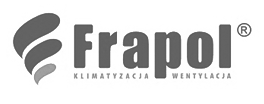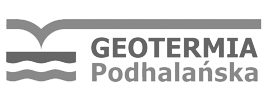Manage workflow in your office
The most innovative and robust software on the market, deploying the potential of integration with office hardware. User-friendly solution to submit forms, manage tasks and track work progress within your entire company.
Watch a mockup orCase studies

Kubas Kos Gałkowski

Inter-Car Silesia

Corab
Most effective device-based solutions
We provide miscellanous web and hardware-based solutions that help your business become more efficient and optimized.
Learn moreData security
Security is one of our key driving principles thus Baseline solutions meet rigorous data security standards. We are the first company that earned “Data Protected” certificate.
What is Electronic Document Workflow?
It is an IT system, a multi-module platform or a set of tools that enables and improves the implementation of business processes based on documents in both digital and paper form. Electronic Document Circulation, often abbreviated as EOD, uses a built-in workflow engine and information flow patterns between organizational units in the company for this purpose. Although the circulation of documents in practice consists in registering incoming letters, digitizing paper documents and assigning them, it also enables issuing electronic applications, orders and forms that are not based on paper versions of documents.
Electronic Document Circulation is very often widely used in the financial and HR areas. It facilitates the registration and circulation of cost invoices and enables their export to the appropriate accounting system. Generates orders and can link them with invoices or PZ documents. In turn, in the HR areas, EOD works well as a system for issuing employee applications, i.e. leaves, travel orders, advance payments.
Since every area of the organization’s functioning is related to document handling, the Electronic Document Workflow is used in practice in many ways, wherever there is a possibility of automating business and operational processes of the company, and thus shortening the service time and eliminating the most common human errors .
Electronic Document and Invoice Circulation – what makes us different?
1. Baseline™ is a document circulation system based on lightweight web technology and UX best practices. It is maximally transparent and intuitive. Only a server with the Windows operating system is required for its proper functioning – no additional components and licenses are installed.
2. Baseline™ document workflow works with office equipment from many manufacturers. As a Brother Technology Partner, as part of the implementation we provide proven and reliable office equipment at attractive prices.
3. We use network solutions based on Ethernet / Wi-fi in place of permanent connections through the LPT port. We use marking with QR codes instead of standard and non-ergonomic bar codes. We support scanning of multiple letters at once without separating documents.
4. Baseline™ has a built-in and intuitive creator of workflow schemes, forms and reports. The local Administrator can modify workflows for the needs of the company at any time without the need to involve a software supplier. This allows, in a way, to reduce the costs of maintaining and developing the system.
5. We support processes for many companies in one system. We process complex authorization matrices and support multilingualism. We have, as a few on the market, a mechanism that OCR invoices without having to “teach” it. We support full-text search Full-Text Search.
6. Baseline™ automates everyday activities: retrieves contractor data from the GUS and VIES database, verifies statuses of VAT payers and their bank accounts, downloads current NBP exchange rates, prepares orders to the bank, OCR invoices, cooperates with Poczta Polska e-sender and tracks shipments, controls task deadlines and sends notifications to system users.
7. Each document circulation started has a clear, graphic form of the process. Thanks to this, the user is immediately aware of where the given document is currently located, what its status is and to whom it is assigned within the circulation.
8. We are integrated with many suppliers of popular ERP systems. As part of invoice circulation, all approved and assigned documents are automatically transferred to the accounting system. In turn, Baseline™ receives feedback on whether the invoice has been paid.
9. Document Workflow Baseline™ has a built-in e-mail client. It automatically reads messages from the mailbox and automates the process of entering documents and invoices into the incoming journal.
10. The Document Management System enables the registration of outgoing Correspondence. We are fully integrated with the e-Sender service of Poczta Polska using the available API of the operator, and not the usual import of shipments. Parcels are registered in the Electronic Document Circulation system and then sent to the e-Sender. For each shipment, letter labels and delivery statuses are downloaded with the option of tracking correspondence.
11. The flow of documents allows you to manage the affairs of the company. It allows you to organize topics that are pending in the company in connection with the flow of incoming and outgoing documents.
12. We help to archive paper documents. Our business partner provides archiving services for paper documentation, supports digitization and parameterization of electronic archives. The Baseline™ system has a built-in module for ordering original documents from the archive.
How to find a solid Electronic Document Workflow?
When deciding on a specific tool, let’s make sure at the very beginning that it has proven protection mechanisms against threats. Safety guidelines and standards have been present on the market for a long time and are respected all over the world. Unfortunately, not every manufacturer of the document flow system takes care to apply and regularly verify the level of security relevant to their products. After all, we would not want our data (including personal data) to be available to unauthorized users or leaked outside the organization.
What functional criteria should a good Document Circulation System have?
a) Fast document search
What takes the most time is searching for information. You are not always able to search. Pay attention to whether the Document Circulation System has a search function using various phrases (including tax identification number, contractor or document reference number) and whether it is available on mobile devices (reducing access and service time).
b) Process modeling
The Document Circulation System should be adapted as much as possible to the specific business processes that your organization follows. Therefore, each program of this type should be equipped with a business process wizard or at least be compatible with the BPMN tools available on the market. The built-in tool is definitely a better choice – it is usually not additionally licensed, and working with it does not require migrating schema files between applications. It is worthwhile for the supplier of the EOD system to train us in the administration of their program, so that in the future we can independently design and implement new processes that are implemented in our organization.
c) Change history
In organizations where many departments work on one document, a system is needed that will collect information on who and when made changes in the process. Thanks to this function, users can analyze the path followed by the document and recreate individual versions of attachments (in particular, this applies to group work on document files).
d) Cooperation with print/scan devices
There are models available on the market today, ranging from small and mobile scanners to large multifunctional devices (interestingly, these still have a huge and untapped potential with the support of document circulation, and yet they are most often used as copiers in traditional circulation). It is important that the Document Circulation System automates and shortens the process of manual scanning to an absolute minimum. For EOD applications, it is recommended to choose a scanner with the so-called glass to digitize documents that cannot be easily unbinded. Equipment with a programmable interface is available on the market, which allows for close cooperation between the device and the document circulation system. See examples of such synergy.
e) Updating the system to the latest regulations
It is obvious that the supplier of the Electronic Document Circulation System should adapt its program to the changing requirements in legal. In particular, this applies to the financial areas related to invoice handling, where there have been thorough changes recently in the field of, for example, sealing the VAT gap. A good EOD system should support us in automating such activities as verification of taxpayers and bank accounts based on the so-called white list.
f) Supplier technical support
Contact with the supplier of the Document Circulation System is important not only at the stage of program implementation, but also during everyday work with it. The supplier of such a solution must offer support services not only in terms of consulting and troubleshooting, but also in terms of development. After the implementation period, it’s time to audit the system’s operation and develop a package of additional changes to automate subsequent areas of work on documents as much as possible.
Document Workflow integrated with KSeF
The National e-Invoice System is a government platform that will become mandatory for entrepreneurs from July 2024. The exchange of invoices via KSeF will become an obligatory activity in everyday business transactions, which is why we have integrated the Baseline™ document circulation system with KSeF. The integration almost completely automates the process of downloading and registering financial documents, as well as sending sales invoices, which will also have to be exported to KSeF.
The circulation of documents in the electronic version, which has long been associated with prestige and process optimization, will soon become an almost mandatory tool in the equipment of every company that processes hundreds or thousands of invoices a month. Manual work after the entry into force of the KSeF will become even more burdensome, and sometimes even impossible. While so far invoices could be delivered via different routes to individual locations of the company, from July 2024 they will be available only in one place and only in electronic form, which significantly hinders the physical distribution of the burden on individual document registration points. The Baseline™ Document Flow System has mechanisms that make this possible. What’s more, the system will do most of the work related to invoice processing for the user, and more importantly, it will verify the correctness of the data on the invoice and will not allow the same document to be registered twice if it is additionally sent via a different channel.
Familiarize yourself with the details of integration with the National e-Invoice System and see how easy it is to automate the circulation of documents in a company, regardless of the business profile and scale of the organization’s operation.
Document Circulation System – summary
As it turns out in practice, with the use of appropriate tools, mechanisms and devices, the Electronic Document Circulation in the company can be largely adapted to our needs, thanks to which everyday work with documents will become pleasant and quick. The right selection of software, wisely optimized business processes and high-quality office equipment remain essential. Document management can be really simple and fun.









